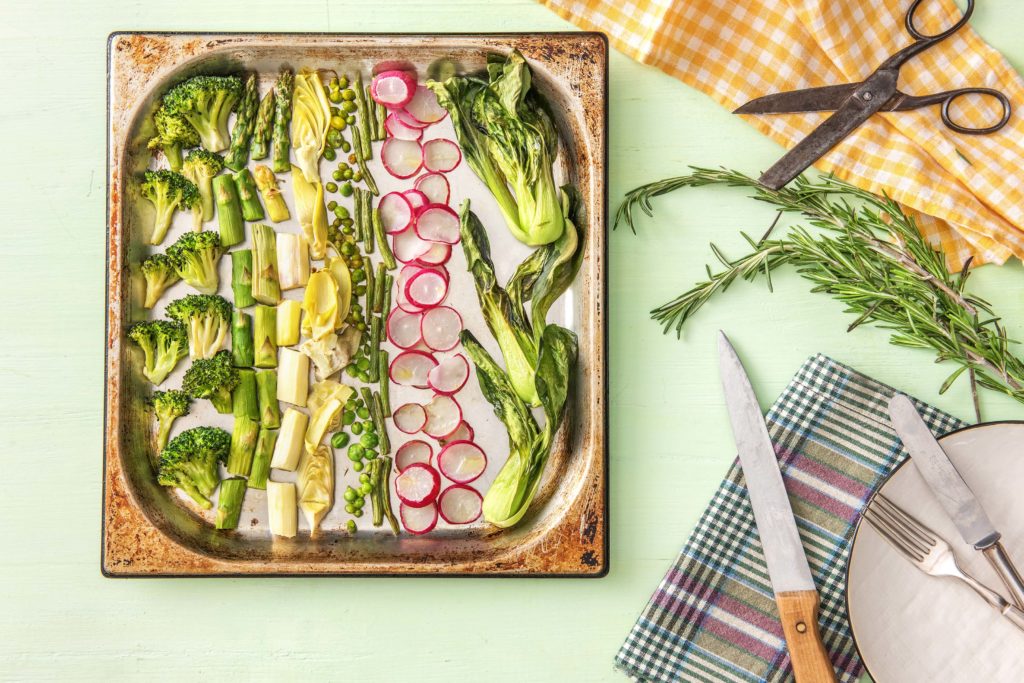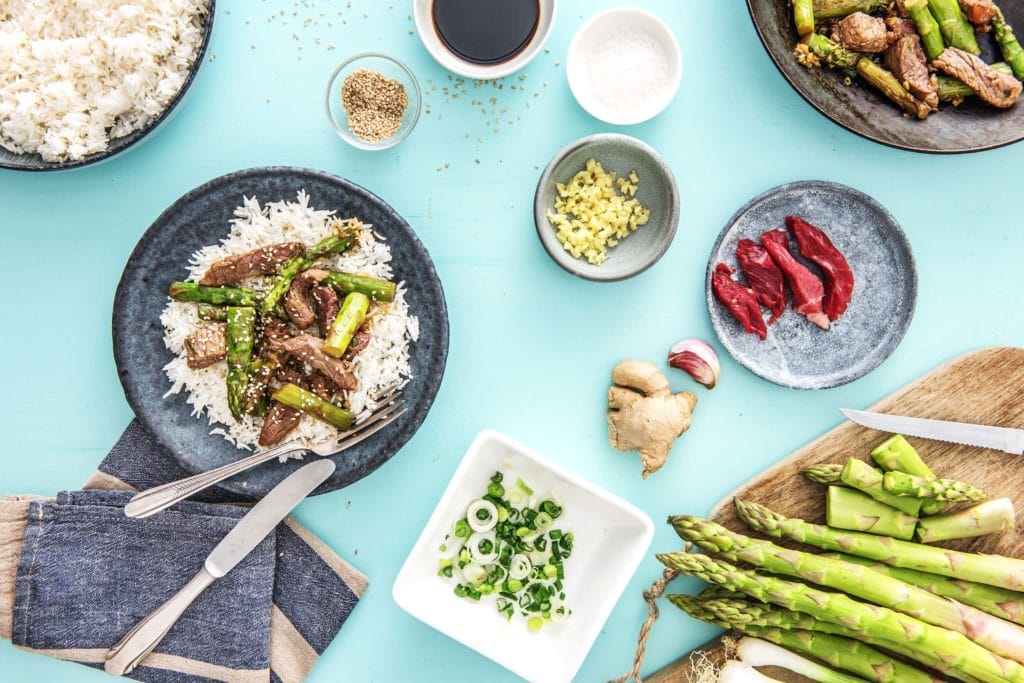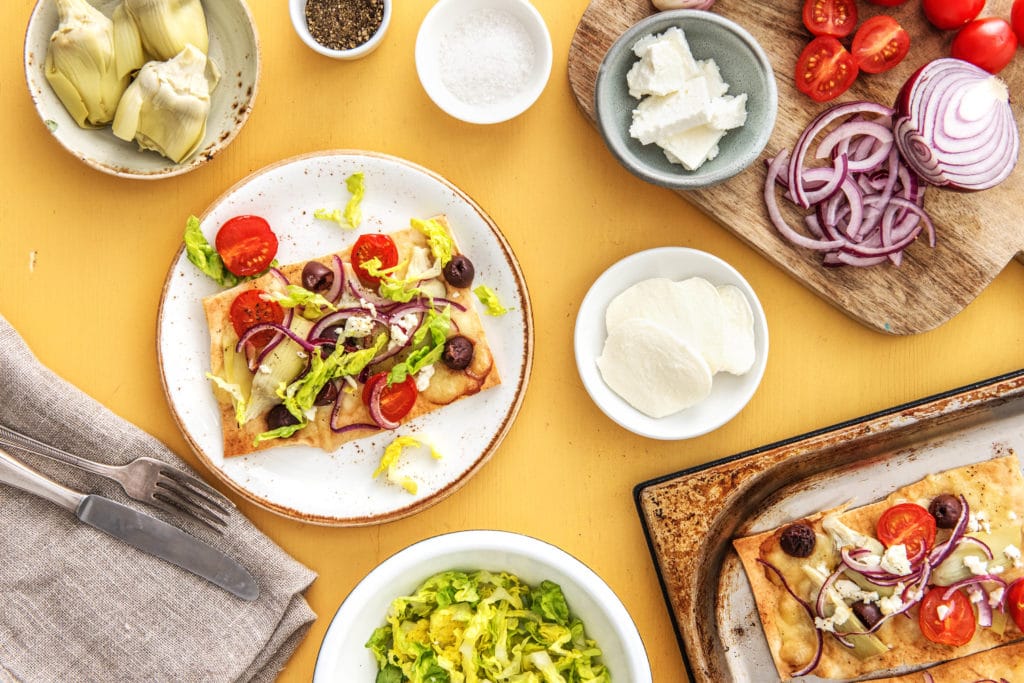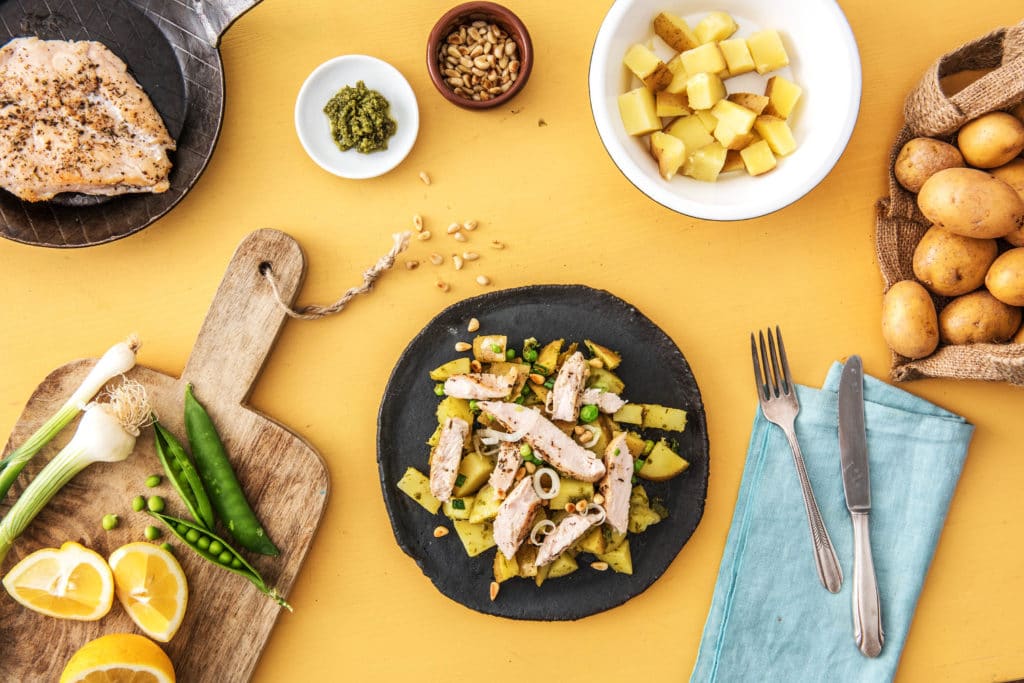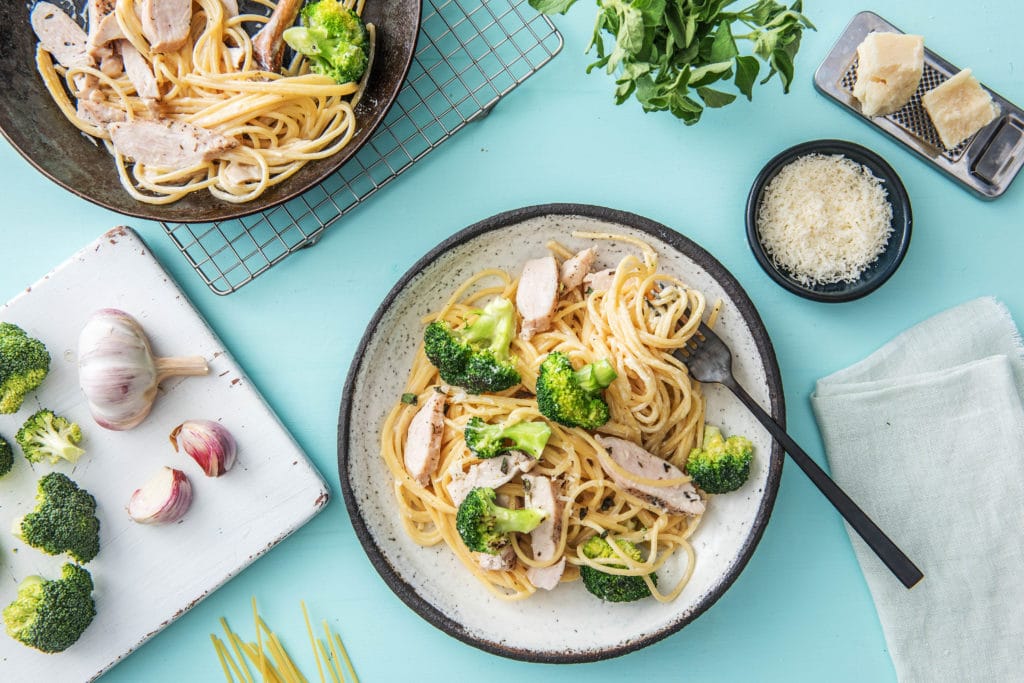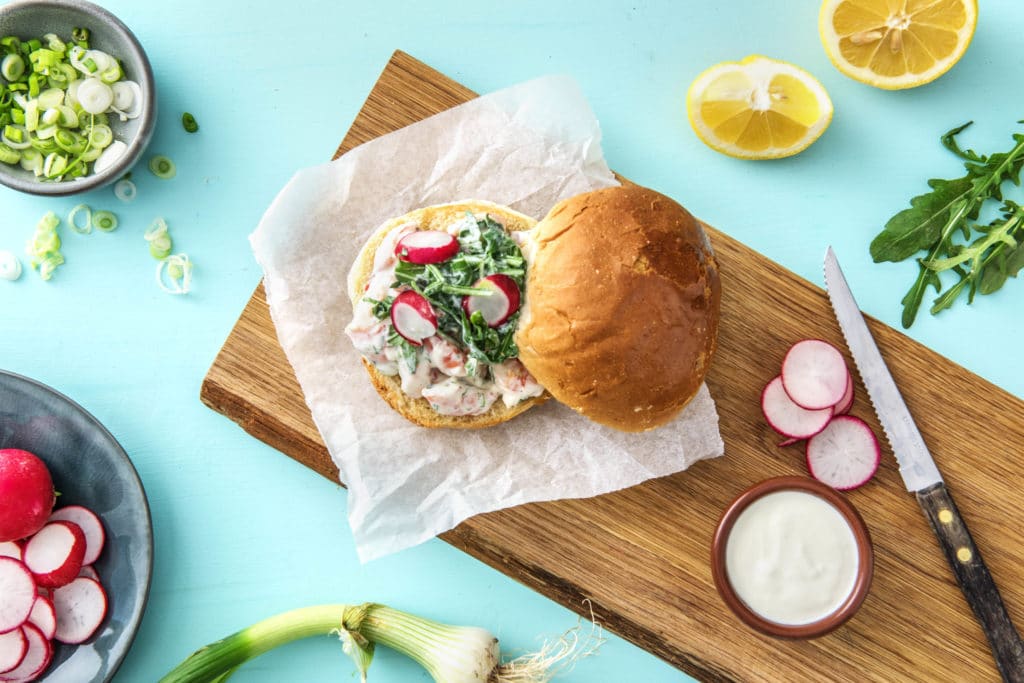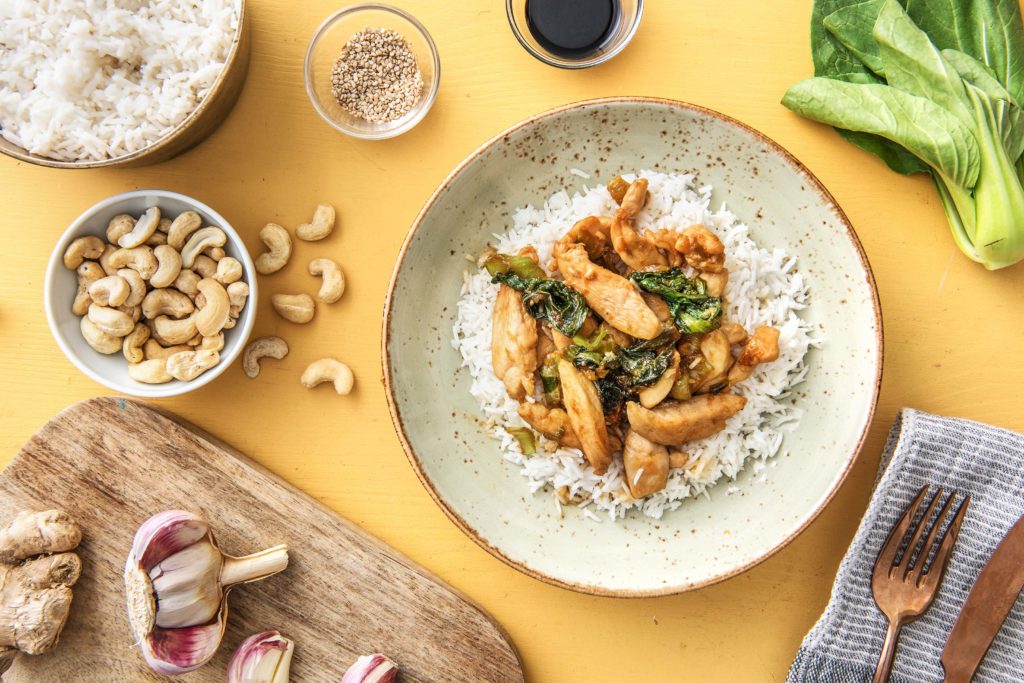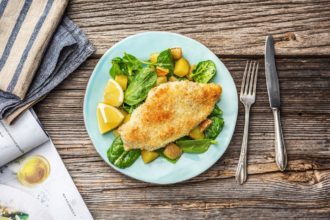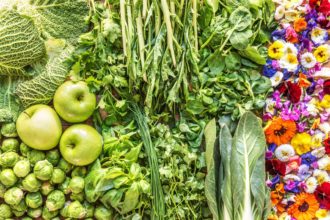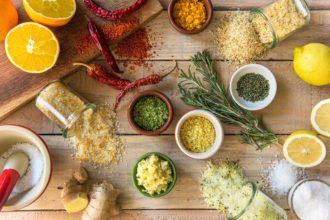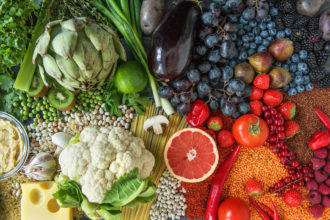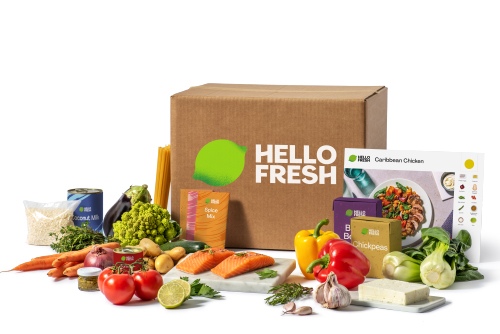7 Spring Vegetables That’ll Make You Happy This Season April 7, 2017
We’re kicking off 100 Days of Happy Cooks with spring vegetables! Discover which seven top our list and why cooking and eating with the seasons will make you happy.
Anyone who’s ever felt the excitement of sizzling veggies hitting a piping hot pan or the roar of boiling water cheering you on knows that cooking has the power to make you happy. That rush of “I can’t believe I actually made that” is the non-scientific proof behind the warm and fuzzy feelings that make you want to cook night after night. But turns out there’s some science behind it all, too. Cooking with the seasons is non-scientifically and scientifically proven to make you happy, which is good GREAT news considering how much we love spring vegetables.
Why cooking with seasonal ingredients will make you happy:
Researchers at Iowa State University’s Leopold Center for Sustainable Agriculture conducted some of the country’s first “food miles” research. They analyzed the transport of 28 different fruits and vegetables to markets via seasonal/local, regional, and conventional food distribution centers. The non-seasonal produce in the conventional system traveled an average of 1,518 miles to reach large grocery stores whereas the seasonal, locally sourced food only traveled an average of 44.6 miles to markets. Fewer “food miles” means:
1. Less flavor is lost en route
Food can only taste how it’s supposed to if you give it time to mature to its full flavor potential before being picked. Non-seasonal produce has to travel farther to reach you, which means farmers must pick it well before it’s ready. Then, it must be refrigerated so as not to spoil during transport, which dulls the flavor.
2. Less nutrients are lost en route
In fact, studies show that some seasonal crops have up to three times more phyto-nutrients than out-of-season crops.
3. Less money is spent on transportation
Think supply and demand here. When produce is in season, there’s an abundance of it, and you’ll be purchasing what’s already growing without paying for extra costs of long travel.
Reasonably priced and extra flavorful produce with more nutritional bang for your buck sounds like three great reasons to be happy, don’t you think? So now that spring has officially sprung, fill your kitchen with these seven seasonal veggies:
1. Asparagus
Recipe: Ginger Beef Stir-Fry with Snappy Asparagus
What exactly is it? A perennial plant in the lily family and the cultivated version of wild asparagus shoots that grow in the Mediterranean.
Historical tidbit: The ancient Egyptians and Greeks ate wild asparagus shoots as a rare spring delicacy.
How to select: Look out for firm, plump, and straight green spears that snap easily when bent. The more mature the plant, the thicker the spear (asparagus plants can live upwards of eight to ten years). The tips should be tight and compact and the white, woody bottoms should take up less than 15% of the total length. To check if an asparagus bunch is fresh, give it a squeeze. If it squeaks, you’re good to go.
Avoid asparagus with wet, slimy, or smelly tips. If you spot only a few inches of green, the plant has likely been harvested too late and will be tough. Also, steer clear of shriveled spears.
How to store: First things first, cut off one inch from the bottom. Wash thoroughly (asparagus is grown in sandy soil, so thorough washing is important). Wrap the freshly cut area in a wet paper towel, place in a plastic bag, and store in the fridge drawer for two to three days.
Nutritional claim to fame: Good amount of vitamin A (to help your eyes and bones), B (to keep you energized), C (to keep the doctor away), and iron (for your blood).
Pairs well with: Butter, cheese, eggs, lemon, olive oil, pasta/risotto/rice, seafood, tarragon, tomato.
Did you know? Asparagus causes urine to smell, ahem, interesting thanks to asparagusic acid, a naturally occurring chemical that our bodies break down into sulfuric compounds. However, this doesn’t happen for everyone. And if it does, you may not even smell it. In fact, scientists from the Monell Center used sensory testing to prove that eight percent of participants did not have smelly urine, six percent couldn’t smell it at all, and one person didn’t produce it or smell it.
2. Artichokes
Recipe: Greek Flatbread with Olives, Artichokes, and Feta
What exactly is it? An edible thistle or, in other words, a flowering plant with sharp prickles (but don’t worry, artichokes don’t bite).
Historical tidbit: Artichokes were prized by the ancient Romans as food of the nobility.
How to select: The best artichokes are deep green and come with tightly packed, crisp leaves that should squeak when pressed together. Smaller artichokes are more tender, and rounder ones have a larger heart. Be sure to avoid ones that look dry or have split leaves. A slight brown discoloration on the leafy edges is okay (it’s just a sign of minor frost damage and won’t affect the quality); however, heavy browning is a no go.
How to store: Refrigerate for up to one week.
Nutritional claim to fame: A bit of potassium (to help regulate blood pressure and strengthen those muscles) and vitamin A.
Pairs well with: Garlic, herbs, lemon, nuts, olive oil, white wine.
Did you know? All artichokes contain an acid called cynarin that makes everything taste sweeter after eating it.
3. Peas
Recipe: Lemony Pan-Seared Chicken with Pesto Potato Salad and Peas
What exactly is it? A member of the legume family with up to eight small green seeds lined inside its pods.
Historical tidbit: Italian Renaissance gardeners were the first to cultivate sweet green peas, and the people of Italy and France still celebrate spring by eating the vegetable.
How to select: Choose ones with plump, unblemished, and bright green pods that are velvety to the touch. The pearl-shaped peas should barely fill their pod. You definitely don’t want flat, dark green, or overgrown peas with gray specks.
How to store: Refrigerate peas in their pods in a plastic bag for two to three days.
Nutritional claim to fame: Good source of vitamins A and C as well as niacin (which improves cholesterol and supports proper brain function) and iron.
Pairs well with: Artichokes, chives, lettuce, mint, salmon, scallions, scallops, shrimp, tarragon.
Did you know? Although pea pods are too stringy to eat raw, they lend a wonderful flavor to soup broth.
4. Broccoli
Recipe: One-Pot Chicken Alfredo with Parmesan, Fresh Oregano, and Broccoli
What exactly is it? A deep, emerald green vegetable in the brassica/cruciferous/mustard family.
Historical tidbit: Thomas Jefferson was a big fan of broccoli. In fact, he imported the seeds from Italy and planted them in Monticello, VA in May 1767.
How to select: Look out for a deep green or green/purple color, tightly closed buds, and crisp leaves. The thin stems should be a lighter green than the buds.
How to store: Refrigerate unwashed in an airtight bag for up to four days.
Nutritional claim to fame: Loaded with vitamin C (1 cup = your entire recommended daily intake).
Pairs well with: Balsamic vinegar, butter, cheese, chicken, chile peppers, garlic, lemon, pasta, sausage.
Did you know? The word “broccoli” comes from the Italian word for “cabbage sprout,” which makes sense considering it is a relative of cabbage and Brussels sprouts.
5. Green Beans
Recipe: New York Strip Steak with Truffled Mashed Potatoes and Green Beans Almondine
What exactly is it? A member of the common bean family that’s often, but not always, green. Its long, slender pods have small seeds inside.
Historical tidbit: The green bean originated in Central and South America and was first introduced to the Mediterranean by Christopher Columbus in 1493.
How to select: You want green beans that are tender, crisp, well-shaped, and smooth. Velvety skin is a positive sign that they were freshly picked. If you can spot the shape of the beans in the pods, they’re overgrown. And if you’re opting for the pre-snipped kind, make sure the cut ends are green and moist.
How to store: When washed and wrapped in a plastic bag, green beans will keep for up to five days in the fridge. Just don’t snap off the ends until you’re ready to cook.
Nutritional claim to fame: Chock-full of vitamins A and C.
Pairs well with: Almonds, bacon, butter, dill, lemon, olive oil, orange, pine nuts, walnuts, tarragon, tomatoes.
Did you know? Green beans are also called string beans due to the fibrous side strings on older varieties.
6. Radishes
Recipe: Brioche Shrimp Rolls with Arugula Radish Salad
What exactly is it? A root vegetable in the brassica/cruciferous/mustard family (the word “radish” is derived from “radix,” the Latin word for “root”).
Historical tidbit: Radishes were first cultivated thousands of years ago in China, then in Egypt and Greece.
How to select: The ideal radish? Fresh, bright, firm, tender, crisp, and unblemished. If it gives to pressure, the interior will be pithy instead of crisp. Greens should be fresh and perky.
How to store: Radishes don’t keep as well with their tops on, so be sure to remove the greens before storing. (But don’t throw them out! The tops are totally edible and add a peppery taste to salads and soups.) Place radish bulbs in a plastic bag and keep in the fridge for up to two weeks.
Nutritional claim to fame: Loaded with vitamin C, fiber, and isothiocyanates (compounds which are show to be effective against certain cancers).
Pairs well with: Chives, lettuce, mild fish, mint, scallions, scallops, smoked salmon, sweet butter.
Did you know? For added freshness, soak radishes in ice water for a couple hours.
7. Bok Choy
Recipe: Glazed Teriyaki Chicken with Bok Choy and Coconut Rice
What exactly is it? A mild, versatile vegetable in the cabbage family with crunchy white stalks and tender, dark green leaves (also known as Chinese white cabbage, pak choy, pak choi, and white mustard cabbage).
Historical tidbit: Bok choy has been cultivated in China since ancient times and was first introduced to Europe in the 1800s.
How to select: Choose bunches with firm, white stalks topped with crisp, green leaves. Avoid ones with signs of spotting, limp stalks, or discoloration.
How to store: Keep unwashed bok choy in a plastic bag in the fridge drawer for two to three days.
Nutritional claim to fame: 1 cup of bok choy packs in 64% daily recommended value of Vitamin K (to help build strong bones and protect your heart).
Pairs well with: Beef, chicken, chile peppers, ginger, pork, rice, seafood, sesame oil, shiitake mushrooms, soy sauce.
Did you know? The mild-flavored stalks are juicy and sweet whereas the leaves taste more like cabbage.
Keep the springtime celebration going by building a loaded and colorful Buddha bowl with even more spring vegetables.


